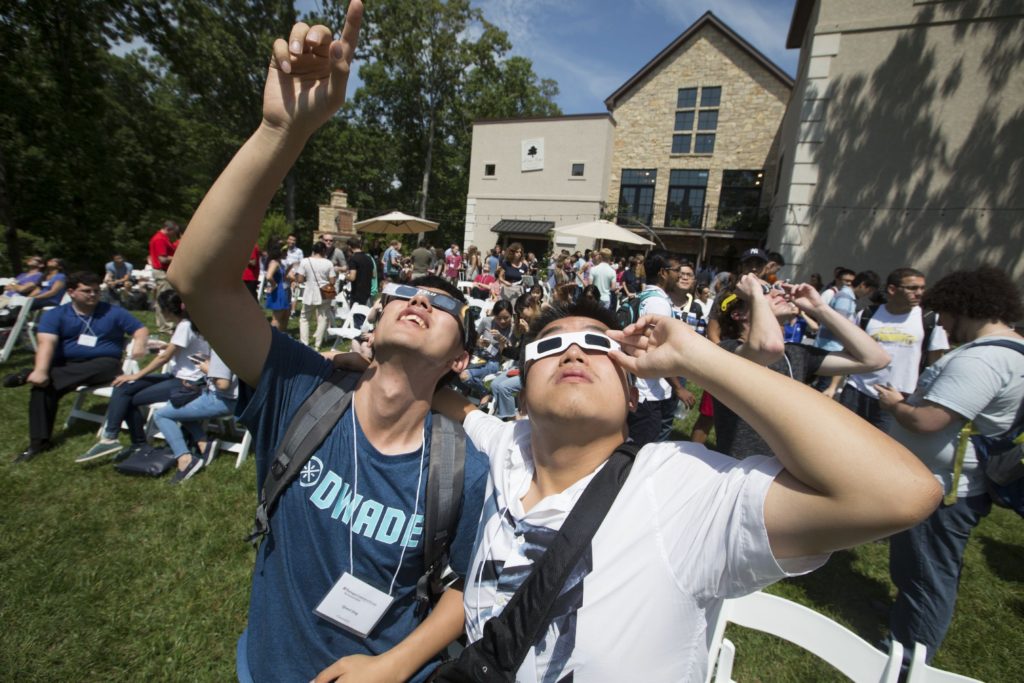Andrea Drotleff, of Germany, did not know the Great American Eclipse would cut through St. Louis until she received an invitation to attend Washington University’s Graduate School orientation. The email promised students an opportunity to make friends, meet the dean and witness one of nature’s rarest phenomena — a total solar eclipse, visible only in the United States.
“Once I realized I would be able to see a eclipse, I became pretty excited,” said Drotleff, who is studying political science in Arts & Sciences. “My family back home will be jealous.”
Some 300 incoming PhD and graduate students attended orientation Aug. 21 at a secluded venue in Franklin County, Mo., located in the eclipse’s path of totality. The day was devoted to informing new students about the Graduate School’s many services and student groups. But between the lecture on local tax laws and the update on health insurance, the students stopped to marvel at the eclipse.
The group was in the path of totality for 2 minutes and 17 seconds. Nearly every student gasped and cheered at the sight of the blazing corona. But Ria Das, a computer science student from India, said she experienced a special sense of serendipity.

“To be here, at this moment, is so special,” said Das, whose home is about 8,000 miles from the eclipse path. “I will cherish this moment all of my life.”
Das’ classmate, Justin Deters of St. Louis, agreed.
“That was pretty cool,” Deters said. “Let’s do it again tomorrow.”
How about 2024? Though Monday’s event was the region’s first total solar eclipse since 1442, the next eclipse is a mere seven years away.
Ryan Nickerson, a PhD student in earth and planetary sciences in Arts & Sciences, will be ready. Before the Aug. 21 eclipse, he gave a talk to the students about what they would feel (cooler temperatures — though just barely); hear (the mad chirping of crickets); and see (Mars, Jupiter and Venus).
Afterward, Nickerson said years of studying did not prepare him for the power of the eclipse.
“One of the most important pictures of the 20th century is the small blue marble taken by the Apollo astronauts. I think this is the closest we here on Earth can get to having that feeling,” Nickerson said. “To see the cosmic movements of the universe makes you realize how small we really are.”